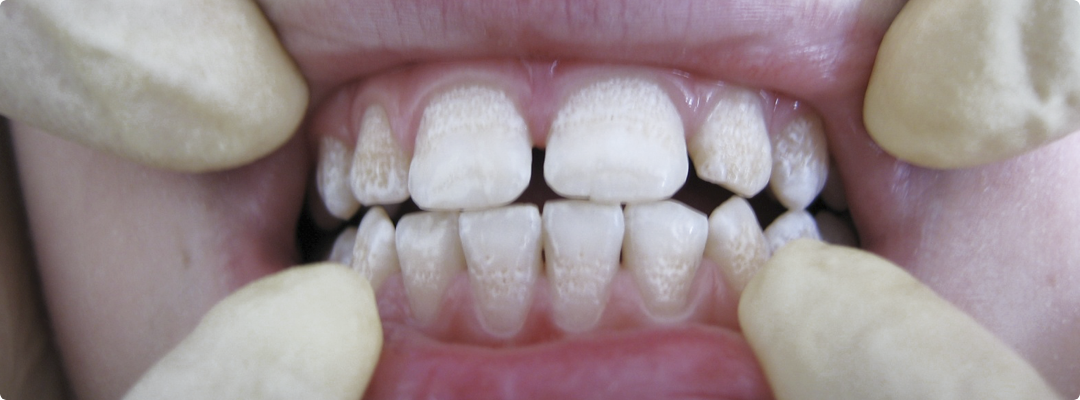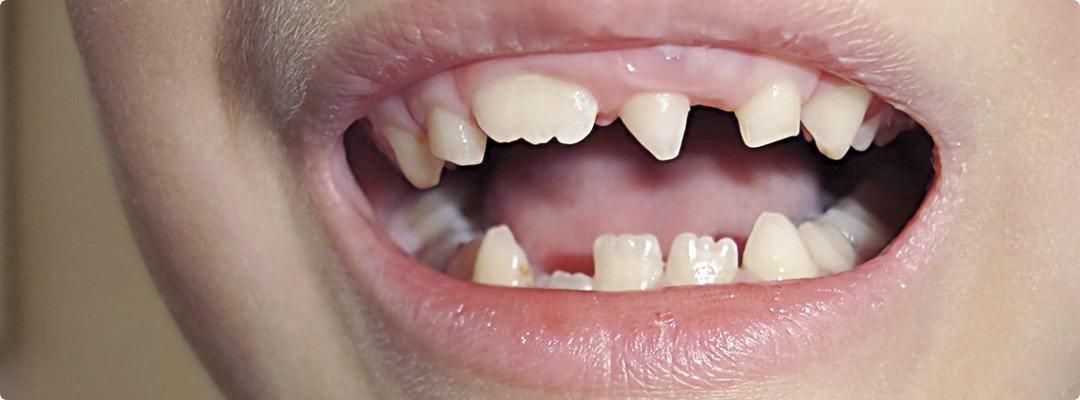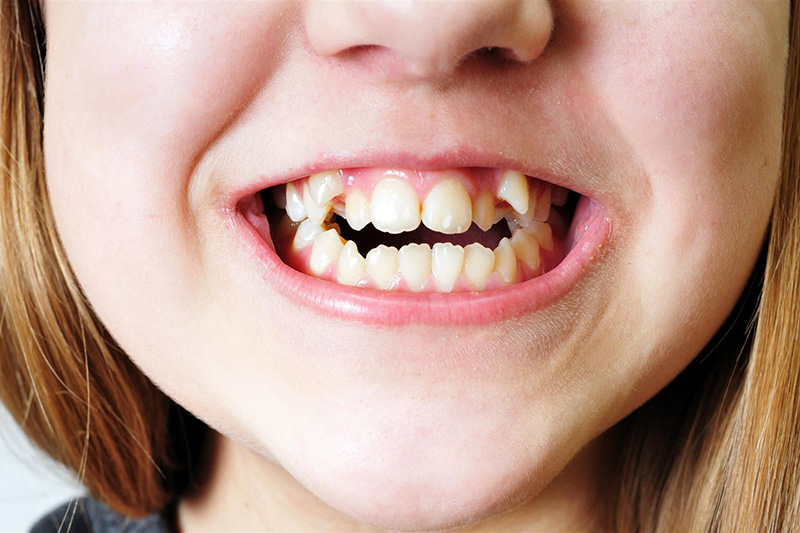Tooth and enamel abnormalities occur in both children and adults. Externally, such teeth differ from normal teeth in shape, color and size. Therefore, a person experiences aesthetic discomfort. And with a serious pathology faces difficulties in the process of chewing food and pain syndrome. When and why the pathological process occurs, how it affects the teeth and whether you can fight it, we will tell you in this article.
Causes of tooth and enamel anomalies
Most anomalies of teeth and enamel are congenital, that is, pathological changes occur during the intrauterine period, when the rudiments of teeth are just forming. Less often, anomalies are acquired.
What causes anomalies of teeth and enamel
- The tooth lies sideways, so in any case will lead to problems
- Prolonged intake of certain groups of medications (including by the mother during pregnancy)
- Changes in the hormonal background
- Problems with the endocrine and immune systems
- Genetic diseases and hereditary predisposition
- Metabolic disorders or increased content of certain minerals
Anomalies of teeth and enamel are diagnosed by a dentist or orthodontist during a routine examination or with the help of X-ray examination.
Types of dental anomalies: classification
- By shape. Teeth have a non-standard shape: flattened or shortened crown with changes in the cutting edge, can be very small or too large.
- By position. Teeth change places, rotated relative to their axis, located very high or, conversely, low. Anomalies of the position of the teeth are now common and are detected on scans.
- By number. There can be a complete or partial absence of teeth (adentia), as well as supercomplete teeth (polyodontia or hyperdontia).
- By enamel color. Anomalies occur due to underdevelopment of hard tissue, absence or excess of enamel.

Dental enamel anomalies
Enamel covers the crown part of the tooth and performs a number of very important functions. The main one is protective. If the enamel develops abnormally, pathological processes begin, the shape of the tooth, the structure of its surface and color change.
Types of enamel anomalies
- Hyperplasia of tooth enamel
This is the case when there is too much tooth tissue. This anomaly is called dental enamel hyperplasia, and it is usually associated with increased formation of dentin, which is covered by enamel on top.In this case, the shape of the teeth does not differ from normal teeth, but on their surface, enamel bulges are formed, which are called “enamel pearls”. Their diameter is 2-4 mm. In the center of the “pearl” may be a tissue similar to the pulp. Sometimes it is connected to the cavity of the tooth.Appear such “drops” near the necks of the teeth or in the area of bifurcation of the roots. No physical discomfort is caused by tooth enamel hyperplasia, but it requires more careful oral care. - Tooth enamel dysplasia
It occurs due to improper development of dental tissue and refers to congenital pathologies. Symptoms appear with the eruption of teeth, temporary or permanent, often there is dysplasia of the enamel of the milk teeth of the smile zone. With dysplasia, the enamel thins and acquires a gray shade, stains appear. The shape of the tooth changes, the cutting edge has many nicks and chips, and the surface becomes uneven. Over time, enamel dysplasia can lead to enamel chipping and pain. - Dental enamel hypoplasia
This is the underdevelopment of enamel or the complete absence of enamel (allasia). Enamel hypoplasia is the most common non-carious lesion. It leads to changes in the shape and appearance of teeth, bite abnormalities, formation of grooves and depressions. Very often enamel hypoplasia leads to early development of caries and pulpitis.
Enamel anomalies affect changes in the shape and color of teeth.
Complications that can cause tooth and enamel abnormalities
- Increased tooth sensitivity
- Development of tooth decay
- Formation of an abnormal bite
- Increased rate of enamel wear
- Removal of the tooth in case of significant damage to its hard tissues

Abnormalities of tooth shape and size
Pathological processes in the hard tissues of the tooth and their underdevelopment provoke changes in the shape of the anatomical structure of the crown part. These anomalies occur during the formation of tooth rudiments.
Types of dental anomalies by shape and size
- Getchinson’s teeth
This is a congenital dental anomaly in which the shape of the crowns of the upper and lower incisors changes. They look like barrels: the neck area is widened, and the incisal edge has an arc-shaped notch in the center. Often it is not covered with enamel at all, so the teeth are sensitive and quickly exposed to decay. In addition to the aesthetic disadvantage, Getchinson’s teeth make it difficult to eat. This affects the digestive tract and the condition of the body as a whole. - Pflueger’s teeth
In the pathological process in this case, permanent molars are involved. Externally, Pflüger teeth are characterized by large size and underdevelopment of the chewing surface. The tubercular areas have the appearance of an unopened flower bud or tree bud. Although the crown is tapered to the chewing surface, this anomaly does not interfere with the chewing process. - Fournier teeth
The anomaly concerns the central incisors. They are very similar in shape to Pflüger’s teeth, but they lack the semilunar notch of the incisal edge. The enamel in this pathology is usually not discolored and the teeth are not affected by caries. The crown part is characterized by resistance to mechanical impact. And underdevelopment of enamel and dentin can be noticed only with microscopic examination. - Spiky teeth
The pathological process involves the lateral and central incisors of both jaws. The shape of their crowns resembles a spike. Such an anomaly occurs in the case of congenital primary adentia (lack of teeth in the tooth row), which can be caused by various diseases. Occasionally, overcomplete teeth can also have a spike-like shape.
Non-standard-looking teeth often cause the development of psychological complexes, for example, due to the ridicule of others. A qualified doctor will help to get rid of psychological and physical discomfort associated with dental anomalies.

Diagnosis and treatment of anomaly of teeth and enamel
Treatment of the anomaly is reduced to correcting the shape of the teeth and the color of the enamel with the help of veneers and crowns. To restore the enamel, remineralization and restoration with filling materials are also used. In case of serious pathologies, the most effective way is implantation or installation of fixed prostheses.
Only a qualified dentist or orthodontist can diagnose an anomaly of teeth and hard tissues. The treatment plan in such cases is made individually, taking into account the peculiarities of the anomaly and a number of other factors.




